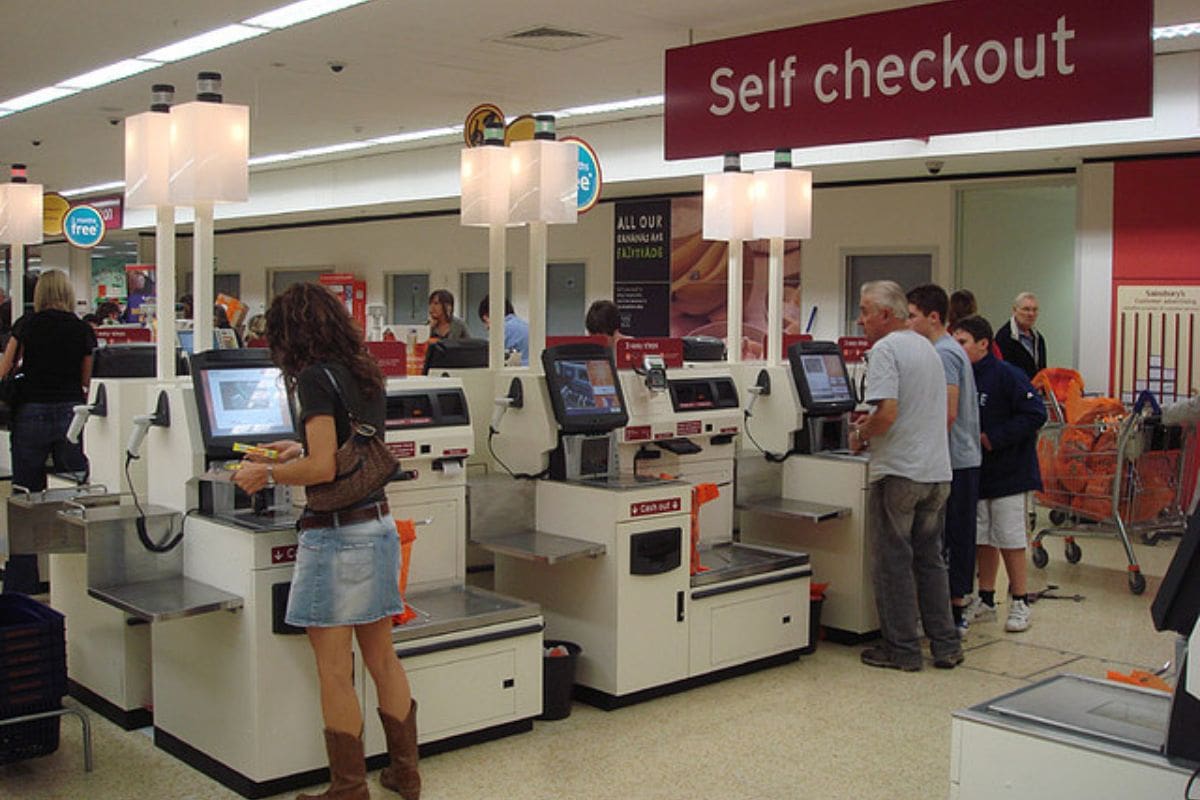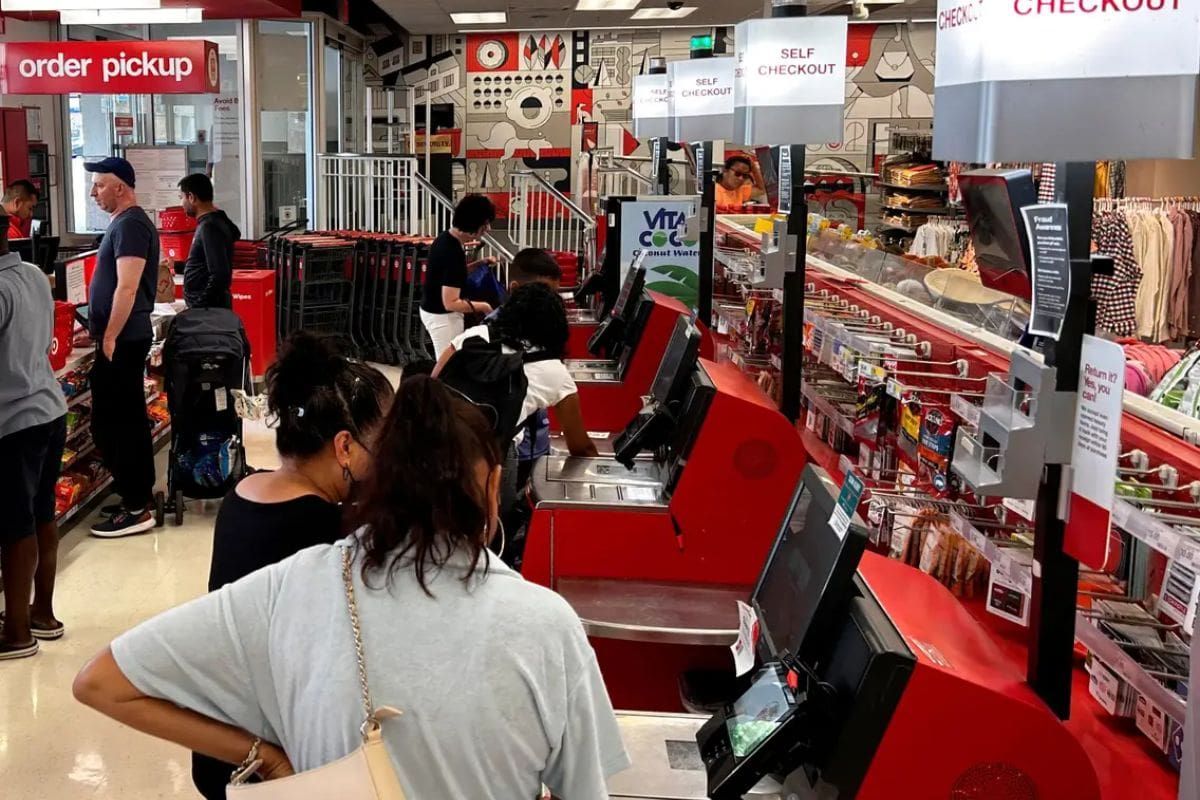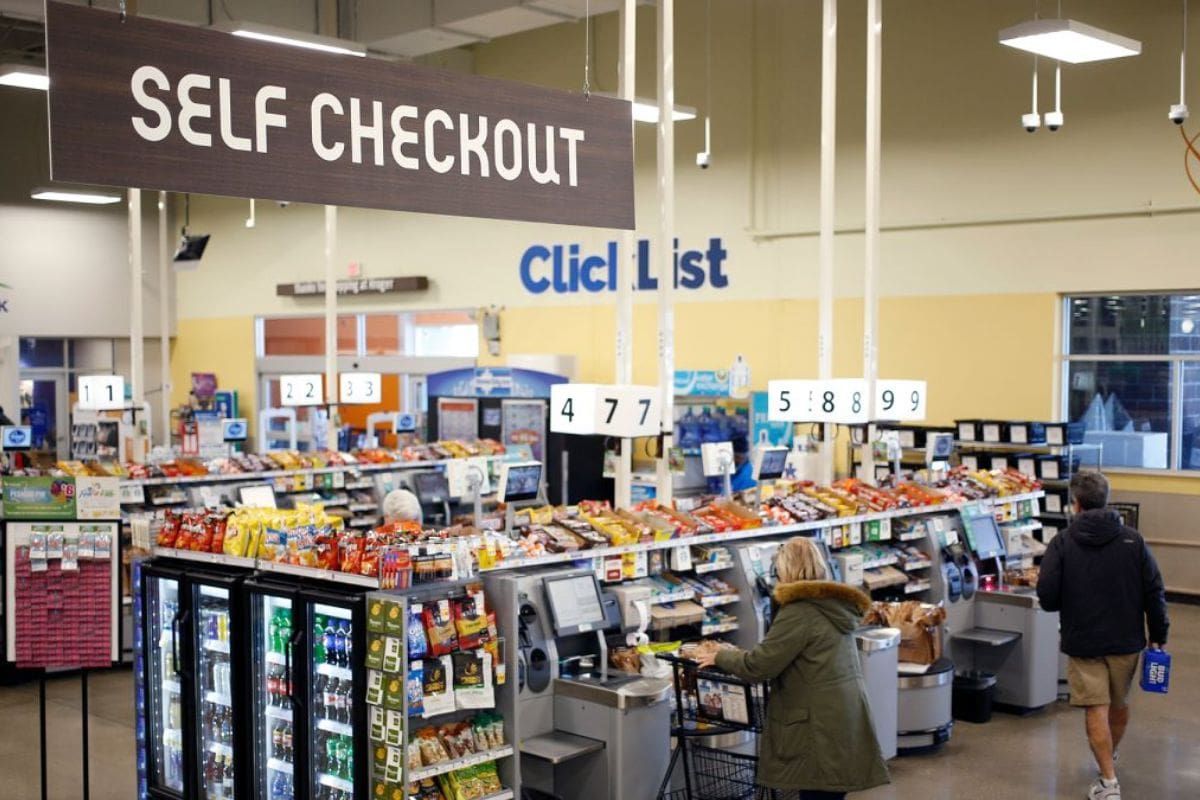California Stores Abandon Self-Checkout: As California stores make the bold move to abandon self-checkout systems, a shift in retail dynamics is underway. Walmart’s recent decision to rope off self-checkout lanes raises questions about the future of this once-popular convenience. With major retailers like Target and Costco reevaluating their strategies, and cities like San Francisco taking action to limit self-checkout options, a new trend seems to be emerging.
How will this impact customer experience and operational efficiency in the long run? The contrasting approach taken by Amazon adds another layer to this evolving narrative, leaving us to ponder the fate of self-checkout systems in the retail landscape.

Walmart Follows Target: Self-Checkout Roped Off in California Store
In response to escalating concerns over theft in retail establishments, a Walmart store in West Hills, California, has recently implemented a precautionary measure by cordoning off its self-checkout area. This decision follows a similar move by Target in the region and comes amidst a backdrop of increased theft incidents within retail settings. The strategic decision to restrict access to self-checkout areas reflects a proactive approach by Walmart to address security concerns and signals a trend in the retail industry towards exploring alternative strategies to mitigate theft risks effectively.
West Hills, known for its affluent residential community with a median household income of $140,000, serves as a location where this change has been observed. When approached for comments, a Walmart spokesperson highlighted the company’s commitment to ongoing innovation and improvement but refrained from disclosing any specific plans regarding the removal of self-checkout options at this time.

Retailers Rethink Self-Checkout: Walmart and Costco’s Response
Amidst growing concerns over theft and operational efficiency, major retailers like Walmart and Costco are reevaluating the utilization of self-checkout machines in their stores. CNN’s coverage highlighted issues such as unintentional shoplifting, forgotten items, and errors in inputting produce codes, prompting these retail giants to reconsider their reliance on self-checkout systems. Walmart had already taken steps by closing self-checkout in New Mexico stores, signaling a shift in strategy. Additionally, Costco has ramped up employee surveillance in self-serve areas to mitigate potential risks associated with these automated systems.
The ongoing debate surrounding the efficacy and security of self-checkout machines continues to evolve, with retailers like Walmart and Costco at the forefront of reevaluation. As these industry leaders navigate the delicate balance between convenience for customers and operational effectiveness, their responses to the challenges posed by self-checkout technology will likely shape the future of retail experiences. Stay tuned as these developments unfold in the dynamic landscape of modern retail.
San Francisco Takes Action: Safeway and Target Close Self-Checkout Kiosks
With major retailers like Walmart and Costco reevaluating their use of self-checkout machines amidst concerns over theft and efficiency, San Francisco has taken action by witnessing the closure of self-checkout kiosks at Safeway and Target since last year. This move reflects a strategic response to the challenges associated with automated checkout systems in the region.
The decision by Safeway and Target to eliminate self-checkout options suggests a shift towards reassessing the effectiveness and security of such technologies in retail settings. By removing these kiosks, these retailers are signaling a willingness to explore alternative approaches that may better address the issues faced with self-checkout, such as theft prevention and operational efficiency.
This local initiative highlights a growing trend where businesses are rethinking the role of self-service technologies in light of evolving consumer preferences and operational considerations. San Francisco’s actions serve as a compelling case study in the ongoing debate surrounding the future of automated checkout systems in the retail industry.
Amazon’s Contrasting Approach: Trusting Customers with Dash Carts
Amazon’s adoption of Dash Carts at Whole Foods in San Mateo exemplifies a pioneering approach that entrusts customers with cutting-edge technology for seamless checkout experiences. These innovative carts leverage computer vision algorithms and sensor fusion to automatically charge items to customers’ Amazon Prime accounts.
Amazon’s willingness to embrace such advanced technology showcases a stark contrast in trust compared to other retailers who are shying away from self-checkout options. By implementing Dash Carts, Amazon is not only streamlining the checkout process but also redefining the shopping experience for customers.
This bold move underscores Amazon’s commitment to leveraging technology to enhance convenience and efficiency in retail operations. The utilization of Dash Carts at Whole Foods in San Mateo highlights Amazon’s confidence in its customers’ ability to adapt to and utilize sophisticated technological solutions, setting a new standard for the future of retail checkout experiences.

Also Read: Huntington Beach Fires Back: California Housing Lawsuit or Political Posturing
News In Brief
California Stores Ditch Self-Checkout Walmart Takes Lead Amidst Rising Theft Concerns. Major retailers Target and Costco reevaluate, while San Francisco sees Safeway and Target closing kiosks. In contrast, Amazon’s Whole Foods in San Mateo trusts customers with Dash Carts, revolutionizing checkout experiences. How will this impact retail dynamics and customer satisfaction? Stay tuned for the unfolding story of the evolving retail landscape.
Our Reader’s Queries
What is a big problem with self-checkout registers?
Self-checkout lanes pose challenges for both shoppers and stores. A 2021 survey of 1,000 shoppers revealed that 67% encountered issues at self-checkout. Additionally, stores grapple with high installation costs, frequent breakdowns, and reduced purchase volumes.
Why did Walmart start self-checkout?
Self-checkout held the allure of convenience: Customers could bypass lengthy queues by scanning and packing their purchases, freeing workers from mundane tasks, and enabling retailers to cut labor expenses.
How many stores have self-checkout?
Self-checkout is provided by 96% of surveyed retailers.
Why is self-checkout a disaster?
A significant disaster unfolds as the checkout machines prove more challenging for users than anticipated. Customers encounter various difficulties, necessitating store employees’ constant assistance to prevent unintentional errors or unauthorized goods removal.

